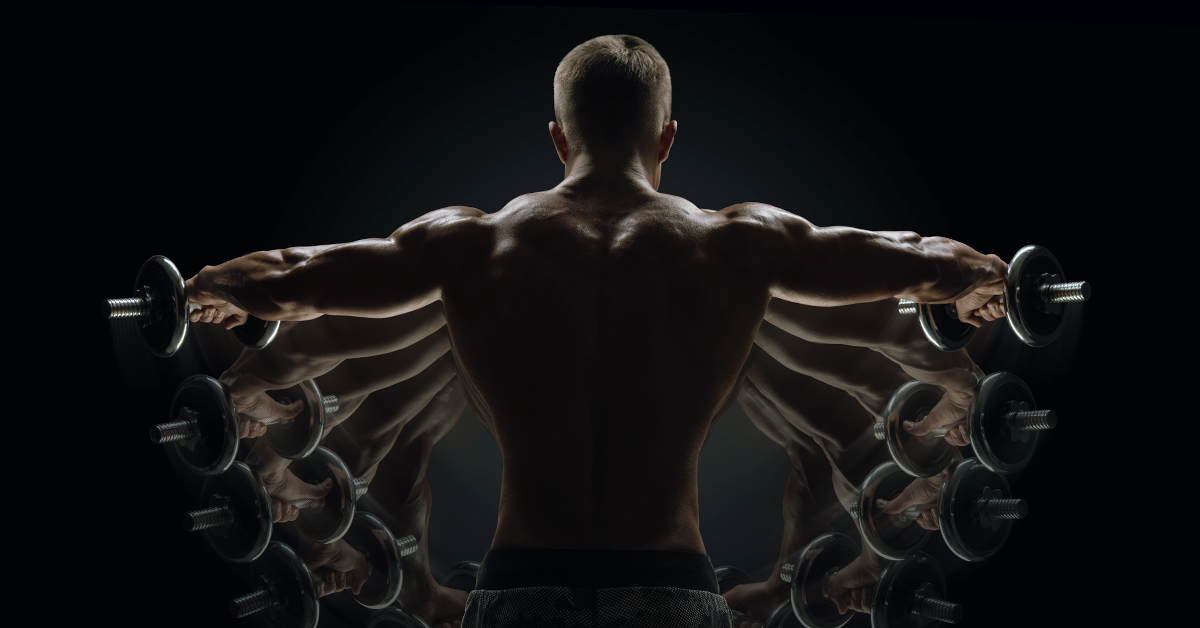Lateral Raise Variations

Cap Off Those Delts with Lateral Raises
You can't overlook the power of impressive-looking shoulders. Broad, well-developed shoulders are crucial for that bigger, stronger and more defined look. Plus, the deltoids are key—they really help to widen your frame.
Strengthening and growing your delts relies heavily on targeting the middle deltoids, also known as the medial, lateral or side delts. Properly trained, this muscle caps off the shoulders nicely. So, what’s a great isolation exercise for this? You guessed it—lateral raises.
Starting Position Checklist
Get your positioning and stance right before lifting:
- Feet just under hip-width apart
- Slight hip hinge
- Core braced
- Legs and arms not fully straightened
- Slight elbow bend
- Shoulders rolled back and down
- Chest up
- Head up
- Eyes forward
Focus On Form
If you find yourself flapping, shrugging, or feeling strain in your neck and lower back, you need to adjust your form. Lift your arms at a 45° angle in front of you, raising them up and out instead of directly beside your body. Lead with your elbows, keep your palms facing down and align your upper arms with your torso. Target your middle delts without activating your traps. This can unintentionally target muscles in the wrong areas.
Optimise Shoulder Gains
Lowering the weight can correct most form issues and improve your technique. There's no shame in starting with a light to moderate weight, especially since this movement can be challenging if your technique isn't spot on.
If you’re still battling with lighter weights, consider using ankle cuffs instead of a D handle to ease forearm and grip strain. This is a great way to refine your form and work on building shoulder strength before upping the weights.
Stability/Beginner Variations
Seated Lateral Raise:
Ideal for beginners, this exercise isolates the deltoids with straightforward execution. Sitting down provides stability, reducing the risk of using momentum or engaging other muscles improperly.
Chest Supported Lateral Raise:
Performing the exercise on a slight incline bench, with the chest supported, reduces strain on the lower back and helps focus on limiting momentum in the legs and torso. This increased stability allows for better muscle isolation and engagement of the delts.
Single Leaning Lateral Raise:
This variation is perfect for those aiming to improve their range of motion. Leaning to one side enhances the stretch and contraction of the deltoids, effectively isolating the muscle while increasing flexibility and range of motion.
Advanced Variations
Single Cable Lateral Raise:
This exercise provides a more advanced challenge by allowing you to perform lateral raises with constant tension. Adjusting the cable height to waist level or starting from the bottom offers varying resistance levels. For an even more challenging exercise, place the cable behind your back.
Three-Way Lateral Raise:
The Three-Way Lateral Raise is highly effective for comprehensive shoulder development. By targeting the deltoid muscles from all angles—combining a traditional lateral raise, front raise and bent-over rear delt raise—this exercise thoroughly tests shoulder strength. It ensures balanced development of the anterior, middle and posterior deltoids, leading to improved shoulder stability and muscle growth.
If you're on the hunt for more exercise tips, techniques and tutorials, check them out here!






